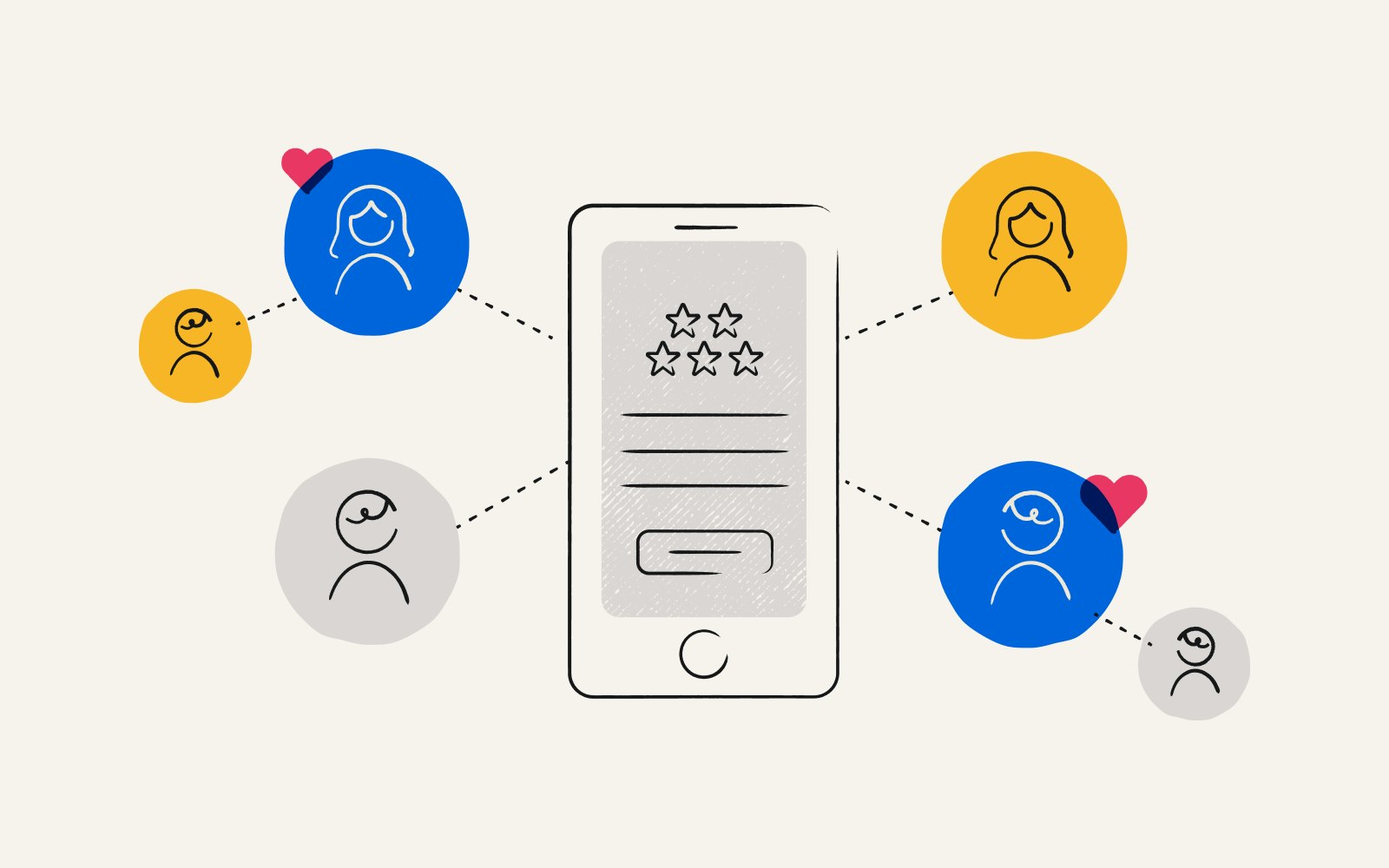Getting started with referral marketing
By Zach Links●7 min. read●Apr 10, 2025

It's not easy to set up a referral marketing program from scratch, but the effort is worth it. Well-crafted referral marketing programs turn satisfied customers into enthusiastic advocates for your brand. And that enthusiasm pays off — customers who come from referrals tend to convert faster and spend more than customers acquired through other methods.
Referral marketing can deliver high-quality leads at low acquisition costs — but not all referral programs are created equal. In this article, you'll learn why referral marketing works and how to build a cost-effective program that brings in high-ROI customers. You'll also get a breakdown of proven strategies that work across industries, see which types of rewards spark maximum participation, and learn how to measure your program's impact on the bottom line.
What is referral marketing?
Referral marketing is a customer acquisition strategy that encourages your existing customers to recommend your brand to others. At its core, referral marketing leverages the trust between your customers and their personal networks. Satisfied customers become your advocates and introduce your products or services to potential prospects who already trust the source.
This powerful marketing approach turns customer satisfaction into tangible business growth. When a customer refers someone, they're essentially pre-qualifying that lead for you based on their understanding of both your offering and their friend's needs — that’s a warm introduction that's far more likely to convert than your own cold outreach.
Referral programs are based on a pretty simple exchange: either the referrer receives a reward, the referred customer gets an incentive, or both parties get some sort of benefit. The most effective programs include incentives for both sides, creating a win-win interaction that encourages people to take advantage of the deal.
Referral marketing vs. word-of-mouth
While often used interchangeably, referral marketing and word-of-mouth marketing have distinct differences. Word-of-mouth happens organically when customers naturally discuss your brand without prompting. It’s a powerful way to win new customers, but you don’t have much control over whether or not your customers talk about you.
Referral marketing takes this organic behavior and creates a structured program around it that blends intrinsic motivation with extrinsic rewards. You actively encourage customers to talk about your business with their friends and family, and everyone benefits as a result. This systematic approach gives you more control over customer communication and allows you to track, measure, and optimize your marketing efforts.
Ultimately, word-of-mouth marketing is passive and difficult to measure, while referral marketing is active, structured, and provides clear metrics for success.
Both referral marketing and word-of-mouth buzz leverage the power of social proof (84% of people trust recommendations over other kinds of marketing), but referral programs put you more in control of the process.
Types of referral marketing
Referral marketing programs come in several forms, each with unique advantages. Direct referrals involve current customers who directly connect you with potential customers — often through a referral link or code.
Email referrals rely on your existing email communications to prompt customers to refer others. This works well when you integrate referral prompts into post-purchase emails or regular newsletters, enabling you to catch customers while they're already engaging with your brand.
Social media referrals capitalize on your customers' online networks. These programs make it easy for customers to share referral links across their social media platforms. The public nature of these referrals creates additional brand visibility beyond just the referees.
Partner or affiliate programs are more formal. These arrangements recruit partners who regularly promote your products to their audience in exchange for benefits like commissions.
Benefits of including referrals in your marketing strategy
Referred customers bring exceptional value to your business compared to those acquired through other channels. Research shows that referred customers have up to 25% higher lifetime value and demonstrate greater loyalty than customers acquired through other methods.
The trust factor involved in referral marketing shortens the sales cycle, which leads to higher conversion rates and lower customer acquisition costs (CAC). One study found that referred customers convert 5x faster than non-referred leads.
As your customer base expands through referrals, so does your pool of potential advocates. Each satisfied customer becomes a potential source of multiple new customers. This effect compounds over time resulting in sustainable growth that doesn't rely solely on increasing your marketing spend.
Who should use referral marketing
Referral marketing works in many different industries, but it’s particularly effective for businesses with strong customer relationships.
SaaS, financial, and subscription-based companies often see excellent results from referral programs. These industries benefit from recurring revenue models where customer lifetime value easily justifies referral incentives.
Product-based businesses also thrive with referral marketing. Casper, for example, achieved 7x ROI on their referral program compared to other marketing investments. Their strategy of offering incentives at multiple touchpoints maximized participation, turning existing customers into brand advocates.
Professional services like consulting, accounting, or legal services rely heavily on trust, which makes referrals particularly valuable. A recommendation from a trusted source can overcome initial hesitation about engaging a new service provider.
B2B considerations
B2B referral marketing involves longer sales cycles and higher purchase values than B2C. Decision-makers in business settings place enormous value on recommendations from trusted peers. A referral can shorten the sales process by establishing immediate credibility.
Account credits, extended service periods, and access to premium features can also drive B2B referrals. But the most successful B2B referral programs make the process frictionless. That means the program gives customers easy sharing mechanisms with clear-cut rewards.
Google Workspace's referral program, for example, offers a one-time cash reward of $8, $15, or $23 per user, depending on the plan the new referee selects. Google Workspace plans themselves cost $7, $14, or $22 per user per month, with a 1-year commitment.
That means, assuming an even distribution across plans, Google earns around $11.22 in annual recurring revenue from the end client for every $1 spent. And that’s probably a conservative estimate.
B2C considerations
B2C referral programs thrive on simplicity and immediate gratification. Consumer-focused businesses need referral processes that can be completed in seconds through mobile-friendly interfaces with instant reward delivery.
The reward structure for B2C programs should align with your brand and customer expectations. Fashion retailers might offer store credit, while subscription services could provide one free month.
Monetary incentives like gift cards work across almost all consumer categories, and they’re generally better for your brand than discounts. Coupons and freebies may persuade some customers to spend more, but they can also damage your brand’s reputation.
Social proof plays a crucial role in B2C referral marketing. Highlighting the number of successful referrals or featuring testimonials from satisfied customers can encourage participation. This creates a sense of community around your brand and normalizes the referral process as something for customers.
Examples of strong referral marketing strategies
Referral marketing tends to be both effective and cost-effective, but there are proven strategies that can help you maximize your ROI.
Pro-social messaging
Research on a group of 100,000 customers underscored the importance of pro-social framing. Messaging that emphasized the benefits to the recipient (e.g., “Your friend will get 70% off”) led to an 86% increase in the probability of a sender making any referrals (compared to a generic call to action). The pro-social approach even worked significantly better than what the research calls “the egoistic approach” (e.g., “You will get 70% off).
Airbnb demonstrated this principle when it A/B tested promotional emails. The message "Give Your Friends $25 to Travel" generated more referrals than "Invite Your Friends, Get $25.” The referral program helped lift the company to new heights. Airbnb is currently the third most-visited travel site in the world.
Time sensitivity
That same research study found that referral likelihood decreased the longer after purchase the CTA was sent. This suggests that the best time to ask for referrals is shortly after a customer has a positive experience with your brand, when satisfaction is highest and your value is fresh in the customer's mind.
Consider automating referral requests to trigger immediately after positive reviews. Ask customers to refer a friend as part of your survey flow, or integrate NPS feedback into your emails to quickly capture your customers’ attention.
Make referrals easy to do
Keep it simple. Remember: Your customers are busy people who won't jump through hoops, no matter how attractive the reward might be.
Eliminate friction with a process that’s as simple as filling out a quick form or sharing a personalized link. You can also provide multiple sharing options to accommodate different customer preferences. Offer email, social media, and messaging app options.
Metrics to track referral marketing success
Participation rate measures what percentage of your customers actively engage with your referral program. High participation indicates that your program is appealing to customers. Low participation might mean that your incentives aren't compelling enough, or that the process is too complicated.
Referral conversion rate tracks how many referred leads actually become customers. This metric speaks to the quality of referrals your program generates. High-quality referrals come from customers who understand both your value proposition and their friends' needs, resulting in better-qualified leads.
CAC from referrals should be compared against your other marketing channels. Referral programs typically deliver significantly lower CAC than paid advertising or other acquisition methods. This efficiency makes referrals one of the most cost-effective growth strategies.
Lifetime value (LTV) of referred customers is perhaps the most important long-term metric. Research consistently shows that referred customers have higher retention rates and spend 200% more over time. Tracking this KPI helps justify continued investment in your referral program and demonstrates its impact on sustainable revenue.
Key takeaways
Referral marketing harnesses the power of trust and social connections to drive growth.
When implemented effectively, referral programs deliver higher-quality leads at lower acquisition costs than most other marketing channels. The key is to create a program that balances value for all parties involved — your business, the referrer, and the person being referred.
Success requires careful attention to messaging, process design, and rewards. You should also remember that pro-social framing that emphasizes benefits to the recipient tends to outperform self-interested approaches. And regardless of what incentives you offer, frictionless processes help maximize participation rates.
FAQs
Updated April 10, 2025

